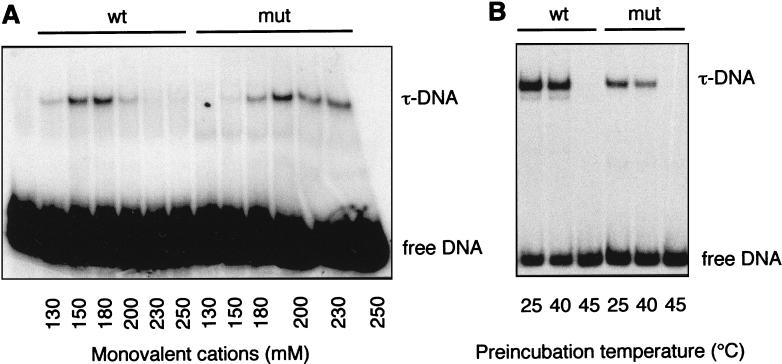FIG. 5.
Compared DNA binding properties of mutant TFIIIC-ΔTPR2 and wild-type factors. (A) Differential salt sensitivity of mutant and wild-type TFIIIC-DNA complex formation. DNA binding reactions containing partially purified wild-type TFIIIC or TFIIIC-ΔTPR2 (in identical amounts) were carried out at 25°C for 10 min in the presence of various concentrations of KCl, 32P-labeled tRNA3Leu gene, and 200 ng of competitor DNA (pBluescript-SK). The concentrations of monovalent cations (K+ and NH4+) indicated take into account the ammonium sulfate brought by the protein fractions (25 mM final concentration). Analysis was done by gel retardation assay as described in Materials and Methods. (B) TFIIIC-DNA complex formation after preincubation of TFIIIC at different temperatures. Mutant or wild-type TFIIIC fractions were preincubated for 10 min at 25, 40, or 45°C as indicated in standard transcription buffer and further incubated in 180 mM monovalent cations with 32P-labeled tRNA3Glu gene and pBluescript-SK competitor DNA (200 ng) for 15 min at 25°C.

